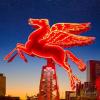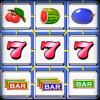Wondering about black seed oil (thymoquinone) :
https://pharmacology...NL007_Molla.pdf
A REVIEW ON ANTIVIRAL EFFECTS OF NIGELLA SATIVA L.
Shamim Molla1, Md. Abul Kalam Azad1, Md Ali Azam Al Hasib1, M. Monayem Hossain1, Md.
Sohel Ahammed1, Shohel Rana1, Muhammad Torequl Islam1*
1Department of Pharmacy, Life Science Faculty, Bangabandhu Sheikh Mujibur Rahman Science and Technology University, Gopalgang-8100, Bangladesh dmt.islam@bsmrstu.edu.bd.
Abstract
Nigella sativa seeds have wide therapeutic effects and have been reported to have significant effects against many ailments such as skin diseases, jaundice, gastrointestinal problems, anorexia, conjunctivitis, dyspepsia, rheumatism, diabetes, hypertension, intrinsic hemorrhage, paralysis, amenorrhea, anorexia, asthma, cough, bronchitis, headache, fever, influenza and eczema. Thymoquinone (TQ) is one of the most active constituent and has different beneficial properties. Focus on antimicrobial effects, different extracts of N. sativa as well as TQ, have a broad antimicrobial spectrum, including Gram-negative, Gram-positive bacteria, viruses, parasites, schist soma and fungi. The effectiveness of N. sativa seeds and TQ is variable and depends on species of target microorganisms. The present review paper tries to describe some antiviral activities of N. sativa. Such as murine cytomegalo virus infection, avian influenza (H9N2), Chistosoma Mansoni Infection, PPR virus, Broad bean mosaic virus, HIV virus, Hepatitis C Virus, Zucchini Yellow Mosaic Virus, and Papaya Ring Spot Virus.
Keywords: Nigella sativa; antiviral effects; HIV; thymoquinone
August 30, 2019
http://pharmacologyonline.silae.it
ISSN: 1827-8620
PhOL
Molla, et al. 48 (pag 47-53)
Introduction
Nigella sativa, a dicotyledon of the Ranunculaceae family, has been employed for thousands of years as a spice and food preservative, as well as a protective and curative remedy for numerous disorders, and is known to have many medicinal properties in traditional medicine (Chopra et al., 1956, Nadkarni et al., 1976). It is the black seed referred to by the prophet Mohammed (PBUH) as having healing powers. Black seed is also identified as the curative black cumin in the Holy Bible, and is described as the Melanthion of Hippocrates and Discroides and as the Gith of Pliny (Attar-ur-Rahman et al.,1985).
Most of studies on biological effect of N. sativa have dealt with its crude extracts in different solvents, however, some studies used its active principles. Haq et al. (1999) fractionated whole N. sativa seeds using SDS-PAGE, which showed a number of protein bands ranging from 94 to 10 kDa molecular mass. Quinones thymoquinone and dithymoquinone are also important constituents of N. sativa (Daba et al.,1998; Nagi et al.,1999).
N. sativa has been reported to have various biological activities (Islam et al., 2019). It exhibited antioxidant properties by suppressing chemiluminescence (Daba et al., 1998; Nagi et al.,1999). Black seed preparations have also demonstrated significant in vivo antineoplastic activity against Erlich ascites carcinoma (Worthen et al.,1998), and in vitro against murine Dalton's ascites lymphoma and sarcoma, and human pancreatic ade- nocarcinoma, uterine sarcoma and leukemic cell lines (Salomi et al., 1991). The active components of black seed also showed antihel-minthic effects against nematodes, cestodes, tapeworms and earthworms (Agarwal et al.,1979; Akhtar et al., 1991). Extracts of N. sativa also showed antimicrobial activity against Escherichia coli, Bacillus subtitles, Streptococcus faecalis, Staphylococcus aureus, Pseudomonas aeruginosa and the pathogenic yeast Candida albicans (Saxena et al.,1986; Hanafy et al.,1991). Black seed has also been evaluated in clinical and animal studies for its choleretic and cytotoxic action (Mahfouz et al., 1962; Tennekoon et al., 1991).
In this review, we have sketched a current scnario on the anti-viral effects of N. sativa and its
derived compounds on the basis of database information.
Methods
An up to date (May 2019) search was made in the following databases: PubMed, Science direct and google scholar with the key word ‘Nigella sativa’ and/or ‘Virus’ and ‘Anti-virus effect’.
Findings
N. sativa against murine cytomegalovirus infection N. sativa oil was found to act against murine cytomegalovirus (Messerle et al., 1992; Reynolds et al., 1993; Smith et al., 1994). In another study, N. sativa oil was also found to act against cytomegalovirus, where an increase in macrophage number and function, and interferon gamma (IFN-γ) production was also reported (Salem et al., 2000).
N. sativa against avian influenza (H9N2)
Avian influenza virus (AIV) subtype H9N2 is becoming a serious threat to poultry birds. H9N2 AIV is an emerging respiratory problem, isolated from different birds from a number of countries and has been reported to have zoonotic potential (Swayne, 2012; Ahad et al., 2013; Umar et al., 2016a,b). Currently, the feed industry is focusing on various substitutes for antimicrobial drugs (Al- Mufarrej, 2014). Antimicrobial agents of plant origin, such as essential oils, plant extracts, and complete plant substances are considered as alternatives to the traditional antimicrobial feed additives. N. sativa oil is one of such alternatives that could be used as feed additives in order to reduce the pathogen load in poultry. Thymoquinone (TQ) has been found as the main bioactive constituent of the volatile oil of N. sativa seeds. In a study, N. sativa was found to exert an anti-influenza virus activity (Umar et al., 2016).
N. sativa against PPR virus
Peste des petits ruminants (PPR), is an acute, highly contagious and economically important transboundary viral disease of sheep and goats associated with high morbidity and mortality (Balamurugan et al., 2014). It is caused by PPR virus, a morbillivirus of the Paramyxoviridae family. Disease severity depends on species infected, breed
http://pharmacologyonline.silae.it
ISSN: 1827-8620
PhOL
Molla, et al. 49 (pag 47-53)
or virus strain (Wernike et al., 2014). As PPR is a viral disease, there exists no particular treatment for the disease and post-exposure therapeutic approaches for infection are not described much in the literature (Balamurugan et al., 2014). Numerous studies report the use of N. sativa as liver tonics, anti-diarrheal, analgesics, and anti-bacterial. Extensive studies on the herb have explored a wide spectrum of its pharmacological actions, including immunomodulatory, antimicrobial and antiinflammatory, properties, etc. Because of its miraculous power of healing, N. sativa has got the place among the top ranked evidence based herbal medicines (Ahmad et al., 2013). Current story describes the immunomodulatory and therapeutic effect of this herb against the PPR virus in experimentally infected goats. N. sativa prevented the occurrence of clinical signs and significant decrease in clinical signs, gross and histopathological abnormalities.
N. sativa against broad bean mosaic virus
Broad bean (Vicia faba L.) is one of the major legumes crops. Broad bean mottle disease is one of the world's main virus diseases in broad bean producing areas. Broad bean mottle virus (BBMV) has spread worldwide wherever broad bean plants are grown. Broad bean mottle virus (BBMV) was classified as a member of the bromovirus group (Hashim and El-Kiey, 1962; El-Alfy et al., 1975). N. sativa is also found to act against MCMV (Nafez et al., 2009; Mehdi et al., 2010).
N. sativa against human immunodificency virus (HIV)
Since 1980’s when the human immunodeficiency virus (HIV) was isolated from patients with opportunistic infections and Kaposi sarcoma, there aremillions of people living with this dreadful virus (Barre-Sinoussi et al, 1983; Gallo et al, 1983; UNAIDS, 2010). It was estimated that no infectious organism has claimed more lives in history than HIV (UNAIDS, 2010). Although the prevalence of HIV infection is reducing globally, many factors had been associated with this gain. The advent of highly active antiretroviral therapy (HAART) and vigorous campaign on sexual behavior considerably have reduced the loss of lives to HIV infection. However, HIV infection is still believed to be incurable and can
only be managed with HAART. N. sativa was found to act against HIV in a number of reports (Onifade 2011,2012,2013).
N. sativa against hepatities C virus
Acute hepatitis C virus (HCV) infection is rarely associated with life-threatening disease, with 15–45% of infected persons recovering within 6 months without any treatment (WHO, 2015). However, chronic infection develops in the remaining 55-85% out of which 15-30% eventually progress to liver cirrhosis after many years of persistent virus carriage. Persistent HCV infection has been a major risk factor for hepatocellular carcinoma (HCC) development (about 2-6% per year) in patients with cirrhosis, mainly through indirect pathways, which include chronic inflammation, cell death, cell proliferation, and induction of free radicals (Sangiovanni et al., 2004; Farinati et al., 2007). Treatment of hepatitis C for virus eradication and non-progression to decompensated liver diseases is achievable and highly recommended for all with chronic infection. The recovery rate however is determined by the strain of the infecting virus, the type of treatment and its early institution (WHO, 2015). An earlier treatment for hepatitis C which combined interferon and ribavirin effectively resolved the infection leading to a cure in 50% of the treated individuals; though frequently associated with life threatening adverse reactions (WHO, 2015). N. sativa was found to act against HCV (Olufunmilayo et al., 2016).
N. sativa against Zucchini yellow mosaic virus Watermelon (Citrullus lanatus L.; family Cucurbitaceae) crop is infected by a dozen of viruses of which Zucchini yellow mosaic virus (ZYMV) that belongs to the genus Potyvirus (family: Potyviridae), is regarded as one of the most destructive viruses. Watermelon infected plants exhibit symptoms that vary from mild to server mosaic, mottling and bubbling followed by leaf deformation and blister (Lisa et al.,1984). ZYMV has a positive single- stranded RNA and flexuous filamentous particles. The antiviral activity of the products including plant extracts, and synthetic chemicals is connected to their components which may act directly by interaction with virus particles in the early stage of infection and block the liberation of its nucleic acid
http://pharmacologyonline.silae.it
ISSN: 1827-8620
PhOL
Molla, et al. 50 (pag 47-53)
that could finally lead to stopping the virus multiplication (Abdel-Shafi et al., 2013). Nigella decoction was found to act against ZYMV (Essam et al., 2017).
N. sativa against Newcastle disease virus
Newcastle disease virus (NDV) has different strains viz, lentogenic less virulent, velogenic and intermediate virulent mesogenic. The disease has high morbidity and mortality with marked decrease in eggs production in laying birds (Alexander, 2000). N. sativa is also found to act against NDV (Al-Garib et al., 2003). The velogenic NDV strains kill the embryo within 48 hours, while lentogenic take 5 to 7 days to affect the embryos (Lam et al., 1995). The active component is crystalline nigellone and thymoquinone that has potent anti-bacterial, anti- inflammatory immune stimulator, anti-parasitic, anti- histamine and anti-hypertensive are the main effects of these seeds (Sultan et al., 2009; Umar et al., 2017). The antiviral drug Ribavirin is well known for the treatment of different diseases like hepatitis. But high dosage produced different types of organ toxicity and was also one the causes of death. Ethanolic extract of the N. sativa is markedly effective against NDV in term of decreased viral load and mortality in embryonated chicken eggs (Khan et al., 2017).
In summary, N. sativa and its derived compounds have been seen to act against a number of human, animals, birds and plant pathogenic viruses. N. sativa may be one of the best sources of anti-viral drugs.
Conflict of Interest
None declared.
References
Chopra R, Nayar S, Chopra I (1956) In: Glossary of Indianmedicinal plants. New Delhi, India: CSIR, p. 175
Al-Mufarrej (2014) Immune-responsiveness and performance of broiler chickens fed Black cumin (Nigella sativa L.) powder. J Saudi Soci Agric Sci 13:75-80.
Islam MT, Khan MR, Mishra SK (2018) An updated literature-based review: Phytochemistry, pharmacology and therapeutic promises of Nigella sativa L. Oriential Pharmacy and Experimental Medicine. Doi: 10.1007/s13596-019-00363-3.
Nadkarni K (1976) Crocus sativus, Nigella sativa. In: Nadkarni KM, editor. Indian materia medica. Bombay, India: Popular Prakashan, p. 386-411.
Attar-ur-Rahman, Malik S, Cunheng H, Clardy J (1985) Isolation and structure of determination of nigellicine, a novel alkaloid from the seeds of Nigella sativa. Tetrahedron Lett 26:2759-62.
Haq A, Lobo P, Al-Tufail M, Rama N, Al-Sedairy S (1999) Immunomodulatory effect of Nigella sativa proteins fractionated by ion exchange chromatography. Int J Immunopharmacol 21:283-95.
Nagi M, Alam K, Badary O, Al-Shabanah O, Al- SawafH, Al-Bekairi A (1999) Thymoquinone protects against carbontetrachloride hepatotoxicity in mice via an antioxidantmechanism. Biochem Mol Biol Int 47:153-9
Reynolds P, Rahija J, Schenkman I, Richter B (1993) Experimental murine cytomegalovirus infection in severe combined immunodeficient mice. Lab Anim Sci 43:291-5.
Messerle M, Keil M, Schneider K, Koszinowski H (1992) Characterization of the murine cytomegalovirus genes encoding the major DNA- binding protein and the ICP18.5 homology. Virology 19:355-63.
Smith A, Brennessel J (1994) Cytomegalovirus. Infect Dis Clin North Am 8:427-38.
.
Daba M, Abdel-Rahman M (1998) Hepatoprotective activity of thymoquinone in isolated rat hepatocytes. Toxicol Lett 95:23-9.
Worthen D, Ghoshen O, Crooks P (1998) The in vitro antitumor activity of some crude and purified components of black seed, Nigella sativa L. Anticancer Res 18:1527-32.
http://pharmacologyonline.silae.it
ISSN: 1827-8620
PhOL
Molla, et al. 51 (pag 47-53)
Salomi N, Nair S, Panikkar K (1991) Inhibitory effects of Nigella sativa and Sa€ron (Crocus sativus) on chemical carcinogenesis in mice. Nutrition Cancer 16:67-72.
Salomi N, Nair S, Jayawardhanan K, Varghese D,Panikkar K (1992) Antitumor principles from Nigella sativa seeds. Cancer Lett 63:41-6.
Akhtar M, Riffat S (1991) Field trial of Saussurea lappa roots against nematodes and Nigella sativa seeds against ces- todes in children. J Pakistan Med Assoc 41:185-7.
Agarwal R, Kharya M, Shrivastava R (1979) Antimicrobial and anthelmintic activities of the essential oil of Nigella sativa. Linn. Ind J Exp Biol 17:1264-5.
Saxena A, Vyas K (1986) Antimicrobial activity of seeds of some ethnopharmacinal plants. J Econ Taxon Botany 8:291-9.
Hanafy M, Hatem M (1991) Studies on the antimicrobial activity of Nigella sativa seed (black cumin). J Ethnopharmacol 34:275-8.
Mahfouz M, El-Dakhakhny M, Gemei A, Mossa H (1962) Choleretic action of Nigella sativa L. seeds oil. Egyp Pharmacol Bull 44:225-30.
Tennekoon K, Jeevathayaparan S, Kurukulasooriya A, Karunanayake E (1991) Possible hepatotoxicity of Nigella sativa seeds and Dregea volubilis leaves. J Ethnopharmacol 31:283-9.
Salem ML, Hossain MS (2000) Protective effect of black seed oil from Nigella sativa against murine cytomegalovirus infection. Int J Immunopharmacol 22:729-40.
Umar S, Munir MT, Subhan S, Azam T, Nisa Q, Khan MI, Umar W, Rehman Z, Saqib AS, Shah MA (2016) Protective and antiviral activities of Nigella sativa against avian influenza (H9N2) in turkeys. J Saudi Soc Agric Sci. doi: 10.1016/j.jssas.2016.09.004
Sheir SK, Omayma, Maghraby AM, Mohamed AH, Osman GY, Al-Qormuti1 SA (2015) immunomodulatory and ameliorative role of Nigella sativa oil on schistosoma mansoni infected mice. Canadian J Pure Appl Sci 9:3345-55.
Swayne DE (2012) Impact of vaccines and vaccination on global control of avian influenza. Avian Dis 56:818-28.
Hashim FM, El-Kiey MA (1962) Nigella sativa seeds of Egypt. J Pharm Sci United Arab Reb 3:121-33.
E1-Alfy TS, E1-Fatatry HM, Toama MA (1975) Isolation and structure assignment of an anti microbial principle from the volatile oil of Nigella sativa L. seeds. Pharmazie 30:109-11.
Aqil K, Khan MR, A. Aslam, Javeed A, Qayyum R, Masood S, Manzoor AW, Yasmeen F, Sohail ML, Umar S (2018) Patho-biological studies of ppr virus in experimentally infected goats with reference to immunomodulatory activity of Nigella sativa seeds. J Animal Plant Sci 28:474-84.
Mohamed EF (2011) Inhibition of Broad bean mosaic virus (BBMV) using extracts of Nigella (Nigella sativa L.) and Zizyphus (Zizyphus spina-christi Mill.) plants. J Am Sci 7:
Onifade AA, Jewell AP, Adedeji WA (2013) Nigella sativa concoction induced sustained seroreversion in hiv patient. Afr J Tradit Complement Altern Med 10:332-5.
Oyero OG, Toyama M, Mitsuhiro N, Onifade AA, Hidaka A, Okamoto M, Baba M (2016) Selective inhibition of hepatitis c virus replication by alpha- zam, a Nigella sativa seed formulation. Oyero et al., Afr J Tradit Complement Altern Med 13:144-8.
Elbeshehy EKF (2017) Inhibitor activity of different medicinal plants extracts from Thuja orientalis, Nigella sativa L., Azadirachta indica and Bougainvillea spectabilis against Zucchini yellow mosaic virus (ZYMV) infecting Citrullus lanatus. Biotechnol Biotechnol Equip 31:270-9.
http://pharmacologyonline.silae.it
ISSN: 1827-8620
PhOL
Molla, et al. 52 (pag 47-53)
Maurya S, Marimuthu P, Singh A, Rao GP, Singh G (2005) Antiviral Activity of Essential Oils and Acetone Extracts of Medicinal Plants Against Papaya Ring Spot Virus. J Essential Oil Bearing Plants 8:233- 8.
Salem ML, Hossain MS (2000) Protective effect of black seed oil from Nigella sativa against murine cytomegalovirus infection. Int J Immunopharmacol 22:729-40.
Barakat EM, El Wakeel LM, Hagag RS (2013) Effects of Nigella sativa on outcome of hepatitis C in Egypt. World J Gastroenterol 19:2529-36.
Okeola VO, Adaramoye OA, Nneji CM, Falade CO, Farombi EO, Ademowo OG (2011) Antimalarial and antioxidant activities of methanolic extract of Nigella sativa seeds (black cumin) in mice infected with Plasmodium yoelli nigeriensis. Parasitol Res 108:1507-12.
Baghdadi HB, Al-Mathal EM (2011) Anti-coccidial activity of Nigella sativa L. J Food Agricul Envir 9:10-7.
Balamurugan V, Hemadri D, Gajendragad MR, Singh RK, Rahman H (2014) Diagnosis and control of peste des petits ruminants: a comprehensive review. Virus Dis 25:39-56.
Khan AU, Tipu MY, Shafee M, Khan NU, Kiani MMT, Rafeeq M, Shah SIA (2018) In-ovo Antiviral Effect of Nigella sativa Extract against Newcastle Disease Virus in Experimentally Infected Chicken Embryonated Eggs. Pak Veterinary J 38:434-7.
Taha SS, El-Sabbagh MMA, Allam AMM (2009) Preparation of Multivalent Inactivated Vaccine Against Some Bovine Respiratory Viruses Adjuvanted by Nigella sativa Oil and its Evaluation in Pregnant Buffaloes and Their Calves. Global Veterinaria 3:429-33.
Wernike K, Eschbaumer M, Breithaupt A, Maltzan J, Wiesner H, Beer M, Hoffmann B (2014) Experimental infection of sheep and goats with a recent isolate of peste des petits ruminants virus from Kurdistan. Vet Microbiol 172:140-5.
Toghyani M, Toghyani M, Gheisari A, Ghalamkari G, Mohammadrezaei M (2010) Growth performance, serum biochemistry and bloodhematology of broiler chicks fed different levels ofblack seed (Nigella sativa) and peppermint (Mentha piperita). Livestock Sci 129:173-8.
AL-Beitawi NA, EL-Ghousein SS, Nofal AH (2009) Replacing bacitracin methylene disalicylate by crushed Nigella sativa seeds in broiler rations and itseffects on growth, blood constituents andimmunity. Livestock Sci 125:304-7.
Onifade AA, Jewell AP, Okesina AB (2011) Virologic and immunologic outcomes of treatment of HIV infection with a herbal concoction, A-zam among clients seeking herbal remedy in Nigeria. Afric J Trad Complement Alternat Med 8:37-44.
Onifade AA, Jewell AP, Okesina AB, Ajadi TA, Rahamon SK, Muhibi MO (2012) 5-month therapy and complete sero-reversion with recovery in an adult HIV/AIDS patient. Sci Rep 124:1-3.
Onifade AA, Jewell AP, Adedeji WA (2013) Nigella sativa concoction induced sustained seroreversion in HIV patient. Afric J Trad Complement Alternat Med 10:332-5.
World Health Organization (2015) Hepatitis C. Fact sheet N0 164. Available at www.who.int/mediacentre/factsheets/fs164/en/, accessed February 7, 2016.
Sangiovanni A, Del Ninno E, Fasani P, De Fazio C, Ronchi G, Romeo R, Morabito A, De Franchis R, Colombo M (2004) Increased survival of cirrhotic patients with a hepatocellular carcinoma detected during surveillance. Gastroenterol 126:1005-14.
Farinati F, Cardin R, Bortolami M, Burra P, Russo FP, Rugge M et al. (2007) Hepatitis C virus: from oxygen free radicals to hepatocellular carcinoma. J Viral Hepat 14:821-9.
Lisa V, Lecoq H (1984) Zucchini yellow mosaic virus. CMI/AAB Descriptions of Plant Viruses no. 282. Slough: Commonwealth Agricultural Bureaux. Link:
http://pharmacologyonline.silae.it
ISSN: 1827-8620
PhOL
Molla, et al. 53 (pag 47-53)
www.bioreba.ch/saas/CustomUpload/.../ZYMV_DAS _ELISA.pdf
Abdel-Shafi S (2013) Preliminary studies on antibacterial and antiviral activities of five medicinal plants. J Plant Pathol Microb 4:190(1-8).
Alexander DJ (2000) Newcastle disease and other avian paramyxoviruses. Revue scientifique et technique (International Office of Epizootics) 19:443-62.
Sultan MT, Butt MS, Anjum FM, et al. (2009) Nutritional profile of indigenous cultivar of black cumin seeds and antioxidant potential of its fixed and essential oil. Pak J Bot 41:1321-30.































 This topic is locked
This topic is locked


























